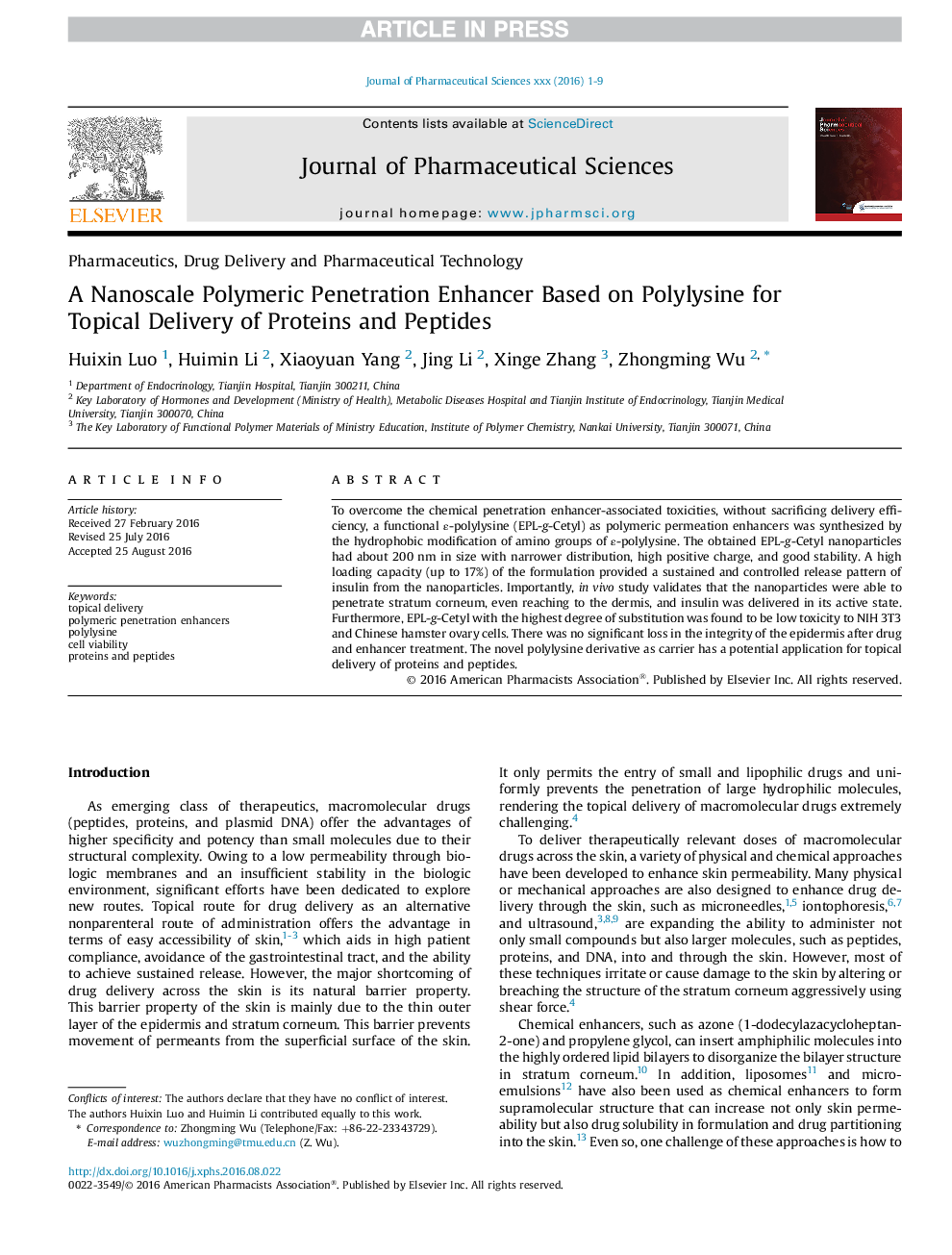| Article ID | Journal | Published Year | Pages | File Type |
|---|---|---|---|---|
| 8514729 | Journal of Pharmaceutical Sciences | 2016 | 9 Pages |
Abstract
To overcome the chemical penetration enhancer-associated toxicities, without sacrificing delivery efficiency, a functional ε-polylysine (EPL-g-Cetyl) as polymeric permeation enhancers was synthesized by the hydrophobic modification of amino groups of ε-polylysine. The obtained EPL-g-Cetyl nanoparticles had about 200 nm in size with narrower distribution, high positive charge, and good stability. A high loading capacity (up to 17%) of the formulation provided a sustained and controlled release pattern of insulin from the nanoparticles. Importantly, in vivo study validates that the nanoparticles were able to penetrate stratum corneum, even reaching to the dermis, and insulin was delivered in its active state. Furthermore, EPL-g-Cetyl with the highest degree of substitution was found to be low toxicity to NIH 3T3 and Chinese hamster ovary cells. There was no significant loss in the integrity of the epidermis after drug and enhancer treatment. The novel polylysine derivative as carrier has a potential application for topical delivery of proteins and peptides.
Related Topics
Health Sciences
Pharmacology, Toxicology and Pharmaceutical Science
Drug Discovery
Authors
Huixin Luo, Huimin Li, Xiaoyuan Yang, Jing Li, Xinge Zhang, Zhongming Wu,
